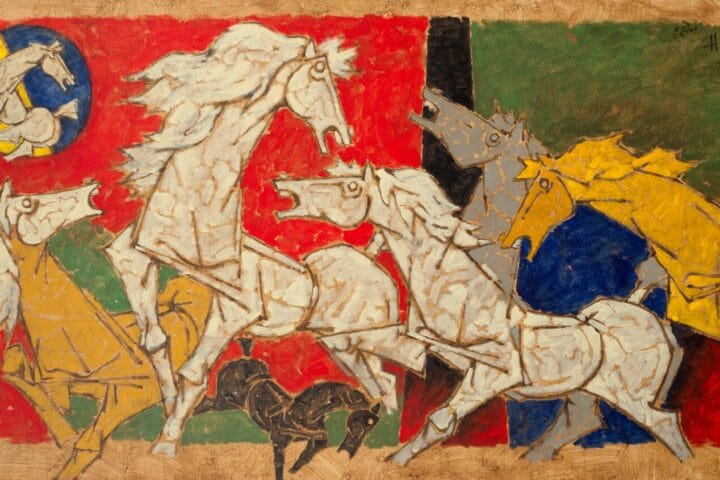As an art enthusiast, I have always been fascinated by the works of Henri Rousseau, the French painter who is known for his unique and enigmatic style. His paintings have captivated audiences for over a century, with their dreamlike quality and exotic landscapes. In this article, I will be exploring the life and works of Henri Rousseau, delving into his artistic journey, style, and techniques, as well as his influence on modern art.
Introduction to Henri Rousseau – Who was he?
Henri Rousseau, also known as Le Douanier (The Customs Officer), was born in Laval, France in 1844. He worked as a customs officer for most of his life, painting in his free time. Rousseau was a self-taught artist, and his works were often inspired by his travels, imagination and the botanical gardens of Paris. He gained recognition as an artist in his 40s, and though his works were not initially well-received, he continued to paint until his death in 1910.
Early Life of Henri Rousseau

Rousseau’s early life was not one of privilege, as he was born into a working-class family in France. He had a limited education and held various odd jobs to make ends meet. It wasn’t until he was in his 30s that he began to paint seriously, after being inspired by a visit to the World’s Fair in Paris. He spent much of his free time painting, even after working long hours at his day job
Henri Rousseau’s Artistic Journey
Rousseau’s artistic journey was a long and unconventional one. He was a self-taught artist who had no formal training, which is why his works are often referred to as “naive” or “primitive.” His style was unique, and he often painted exotic landscapes and animals that he had never actually seen in person. His paintings were also characterized by their bright colors and flat, two-dimensional style.
Analysis of Henri Rousseau’s Style and Techniques

Rousseau’s style and techniques were highly distinctive and unconventional. He often used bold, bright colors in his paintings, which were inspired by his travels and the botanical gardens of Paris. His paintings were also highly stylized, with flat, two-dimensional figures and landscapes. Rousseau’s lack of formal training and his unique approach to painting resulted in works that were often criticized by the art establishment of his time.
Famous Works of Henri Rousseau
Rousseau’s most famous works include “The Sleeping Gypsy,” “The Dream,” and “Tropical Forest with Monkeys.” These paintings are characterized by their exotic landscapes, bright colors, and dreamlike quality. “The Sleeping Gypsy,” in particular, is a highly recognizable painting that has been reproduced in various forms throughout the years.
Criticism of Henri Rousseau’s Artworks
Rousseau’s unconventional style and lack of formal training often made him the target of criticism. His works were initially rejected by the art establishment, who viewed his paintings as primitive and unsophisticated. However, Rousseau’s persistence and dedication to his craft eventually earned him recognition as an artist.
Influence of Henri Rousseau on Modern Art

Rousseau’s influence on modern art cannot be overstated. His unique style and approach to painting inspired many artists, including the Surrealists, who were fascinated by his dreamlike landscapes and flat, two-dimensional figures. Rousseau’s works also had a significant impact on the development of abstract art, as his use of bold colors and stylized forms paved the way for artists to experiment with new techniques and styles.
Henri Rousseau’s Legacy
Rousseau’s legacy as an artist is a significant one. His unconventional approach to painting and his dedication to his craft earned him recognition as one of the most important artists of his time. Today, his works are highly regarded and can be found in major art museums and collections around the world.
Exhibitions and Collections of Henri Rousseau’s Artworks
Many major art museums have collections of Henri Rousseau’s works, including the Museum of Modern Art in New York, the Musée d’Orsay in Paris, and the National Gallery of Art in Washington, D.C. There have also been numerous exhibitions dedicated to Rousseau’s works over the years, including a major retrospective at the Grand Palais in Paris in 2006.
Henri Rousseau was a unique and enigmatic artist whose works continue to captivate audiences today. His unconventional style and approach to painting earned him recognition as one of the most important artists of his time, and his influence on modern art cannot be overstated. As an art enthusiast, I am grateful for the legacy that Rousseau has left behind and the impact that his works continue to have on the art world today.

















